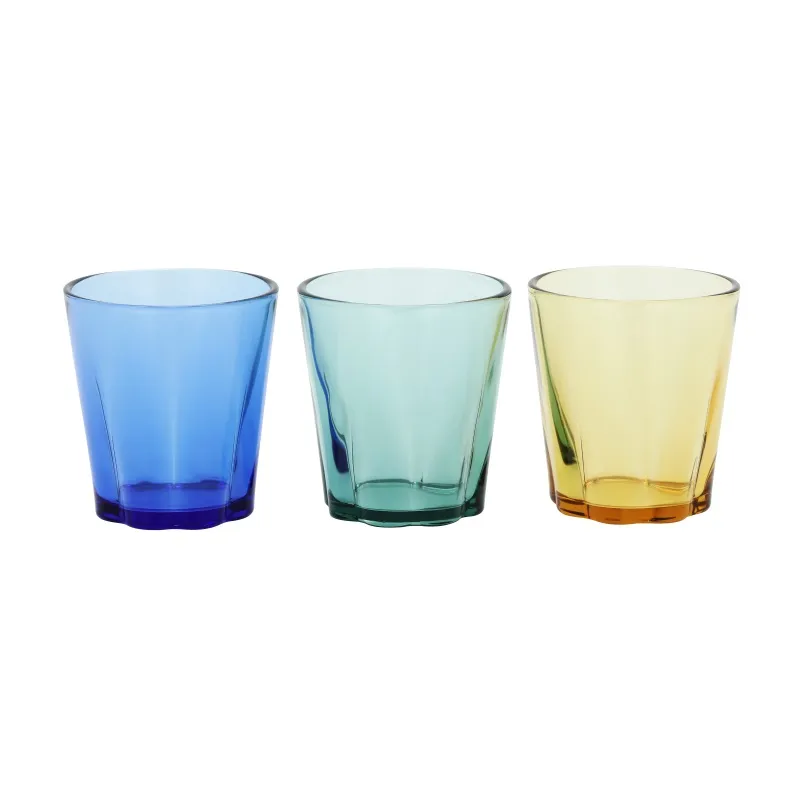 TEL: +86 311 67799298
TEL: +86 311 67799298 Email: tina@yintoglassware.com
Email: tina@yintoglassware.com
3 gallon glass water bottle
The Sustainable Shift Embracing 3-Gallon Glass Water Bottles
In recent years, the global conversation around sustainability has intensified, sparking a movement towards environmentally friendly products. Among the many innovations that have emerged to tackle the issue of plastic waste, the 3-gallon glass water bottle stands out as a remarkable choice for health-conscious and environmentally aware consumers. This article explores the advantages of using 3-gallon glass water bottles, their impact on the environment, and the growing trend of incorporating glass into our daily hydration routines.
The Appeal of Glass
First and foremost, glass has inherent properties that make it an ideal material for water storage. It is non-toxic, does not leach harmful chemicals into the water, and preserves the taste and purity of the liquid inside. Unlike plastic bottles, which can often impart a chemical flavor to the water, glass keeps your hydration experience fresh and clean. The 3-gallon capacity is particularly attractive for families or individuals who prefer to minimize their trips to the kitchen or store. Instead of purchasing single-use plastic bottles that are quickly discarded, a 3-gallon glass bottle offers a sustainable alternative, allowing for extended use without the risk of contamination.
Environmental Impact
The environmental ramifications of using glass water bottles are significant. According to data from various environmental studies, plastic production and waste contribute to a staggering amount of pollution and greenhouse gas emissions. By opting for a 3-gallon glass water bottle, consumers can take a substantial step toward reducing their carbon footprint. Glass is recyclable and, unlike plastic, does not degrade in quality during the recycling process. This means that every glass bottle can be recycled multiple times without losing its integrity. In contrast, recycled plastic often becomes lower quality, leading to further waste.
Moreover, the use of large-capacity glass bottles encourages people to drink enough water, which is crucial for overall health. Opting for a refillable 3-gallon glass bottle promotes mindful drinking habits and reduces the dependency on single-use plastics. When individuals choose to refill their bottles from a tap or water filtration system, they not only save money but also contribute to a decrease in the demand for bottled water—another significant source of plastic waste.
3 gallon glass water bottle

Design and Functionality
In addition to environmental benefits, 3-gallon glass water bottles come in various designs that cater to aesthetic preferences. Many brands now offer stylish options that feature ergonomic handles for easy transport, as well as insulated designs that keep beverages cool. The visual appeal of glass, combined with its functionality, makes it an attractive centerpiece for any home or office environment. Users can showcase their commitment to sustainability while enhancing their decor with these elegant pieces.
Another notable feature of 3-gallon glass water bottles is their durability. Modern glass technology has advanced to produce bottles that are less prone to shattering, making them suitable for everyday use. With proper care, these bottles can last for years, further solidifying their role as a sustainable choice.
Conclusion
As the world grapples with the overwhelming challenge of plastic waste, the adoption of 3-gallon glass water bottles represents a positive shift toward sustainability. By replacing single-use plastic with durable, recyclable glass, consumers can enjoy pure hydration while making a conscious decision to protect the environment. With their numerous health benefits, aesthetic appeal, and environmental impact, 3-gallon glass water bottles embody a modern approach to hydration that aligns with a greener lifestyle.
In this ongoing journey towards sustainability, every choice matters. By embracing the 3-gallon glass water bottle, individuals take an active role in reducing plastic waste and fostering a healthier planet for future generations. As we continue to seek eco-friendly alternatives in our daily lives, let us raise our glass—literally and figuratively—to a cleaner, greener future.
-
Benefits of Vacuum Containers with Pumps for Food PreservationNewsJun.12,2025
-
Glass Food Storage Container with Lid for Seal PreservationNewsJun.12,2025
-
Styling Amber Glass Plates for Modern TablescapesNewsJun.12,2025
-
Benefits of Double Wall Coffee Cups for Heat RetentionNewsJun.12,2025
-
Colored Glass Bowls in Cultural TraditionsNewsJun.12,2025
-
Durability of Colored Glass Dinnerware Compared to CeramicNewsJun.12,2025









